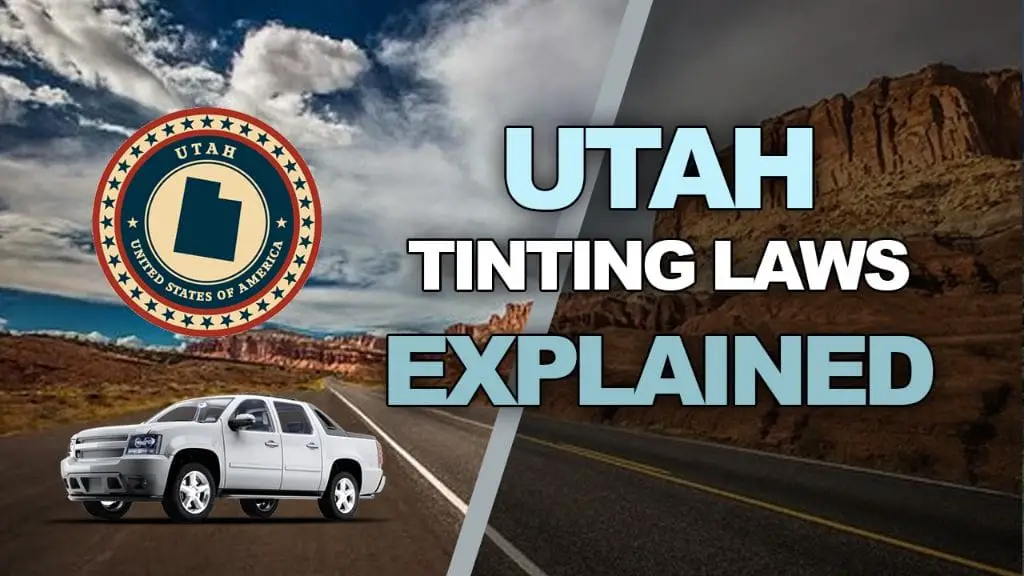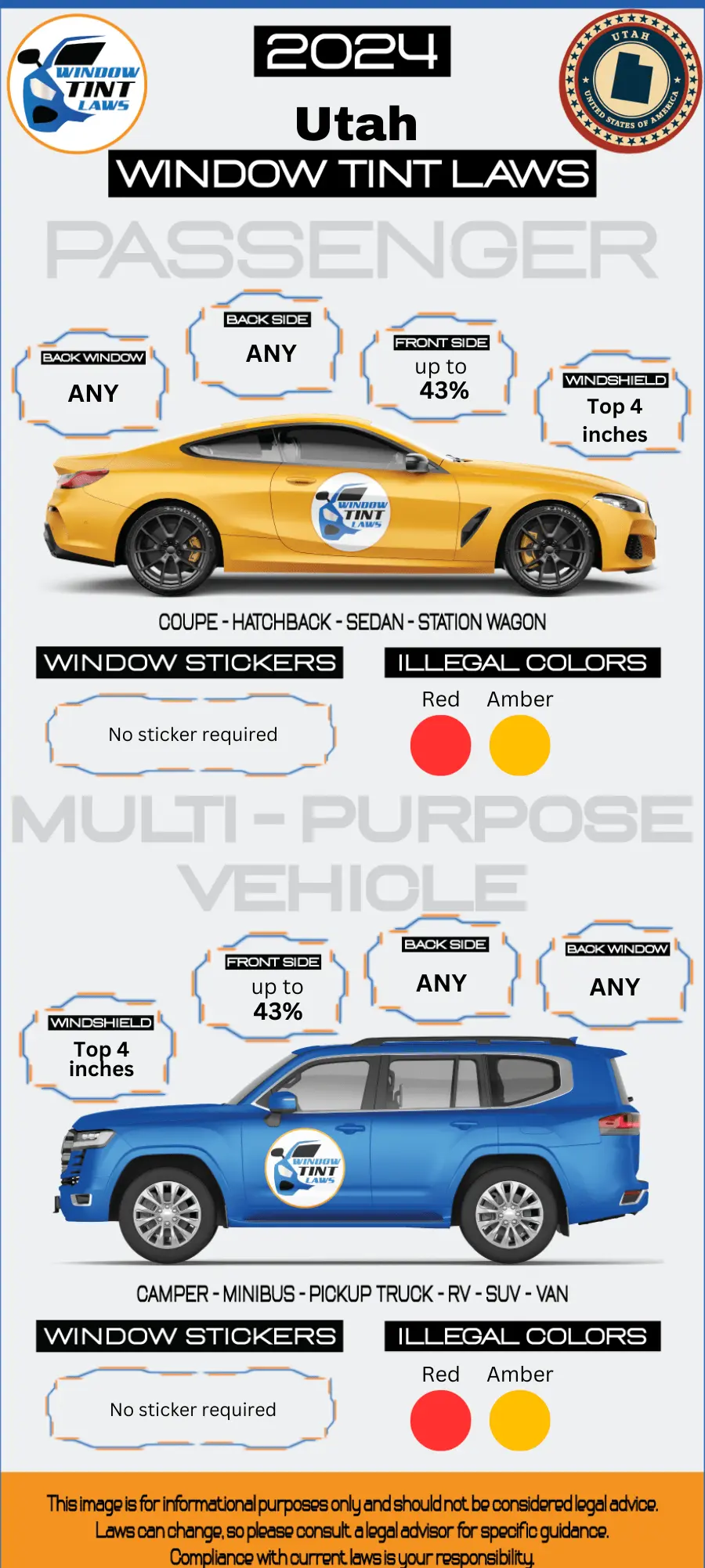

Article Created by Ryan Pietrzak
Last updated on February 14, 2024Utah Tint Laws – 2024 Updated Legal Tint Limit
Please note that Utah Tint Laws Regulation can change daily and may be interpreted differently at the city or county level. We recommend verifying this information with your local DMV or law enforcement agencies. We have manually fact-checked this content using official state resources. Utah enacted tinting laws in 2005. If any information provided is incorrect or outdated, please contact us so we can make the necessary corrections. Thank you.
2024 Utah Tint Laws – Legal Tint Limit For Passenger Vehicles
- Front Windshield: Non-reflective tint is allowed above the manufacturer’s AS-1 line or top 4 inches. No tint is allowed on the windshield except a small top visor strip.
- Front seat side windows: up to 43% tint darkness allowed. The front side windows can have up to 35% light transmission. This allows for a moderately dark tint.
- Back seat side windows: Any tint darkness can be used. There are no restrictions on rear-side window tint. Any tint darkness is legal. There are no restrictions on rear-side window tint. Any tint darkness is legal.
- Rear window: Any tint darkness can be used. The back window can have any level of tint opacity or darkness.
2024 Utah Tint Laws – Legal Tint Limit For Multi-Purpose Vehicles
- Front Windshield: Non-reflective tint is allowed above the manufacturer’s AS-1 line or top 4 inches.
- Front seat side windows: up to 43% tint darkness allowed
- Back seat side windows: Any tint darkness can be used
- Rear window: Any tint darkness can be used

- Medical exemptions: Utah tint law permits darker tints on front side windows with a doctor’s note
- Utah tint law prohibits metallic or reflective tint on any of the windows
- Utah tint law is statewide with no additional local regulations
- Violating Utah tint law generally ranges from around $100 to $200 or more, depending on the specific violation, location, and law enforcement discretion.
What does VLT Mean according to Utah Tint Laws?
- Window tint film’s light transmission is measured as VLT (Visible Light Transmission) and each state has its own legal limits for VLT on car windows.
- A HIGHER VLT means that more light is allowed to pass through the window tint film.
- Example: a 75% tint will allow 75% of the light to pass through whereas a 5% tint will only allow 5% of the light to pass through, making the 5% tint a much darker film.
- Utah window tint laws has specific VLT limits for Passenger Vehicles and Multi-Purpose Vehicles.
FAQ’s Regarding Utah Tint Laws and Utah Legal Tint Limit
What is the darkest legal tint in Utah?
In Utah, the darkest legal tint for the front side windows of both sedans and SUVs/vans must allow more than 35% of light to pass through. For the back side windows and rear window, there is no specified limit, allowing any level of tint darkness. The windshield can have a non-reflective tint above the manufacturer’s AS-1 line or within the top 4 inches.
Are police exempt from window tint laws in Utah?
In Utah, law enforcement vehicles may be exempt from certain window tint laws, depending on the specific circumstances and regulations in place at the time
How do I get a tint waiver in Utah?
To obtain a window tint waiver in Utah due to medical reasons, you must get a medical certificate or letter from a licensed medical professional. This document should explain your specific medical condition and the necessity of window tinting for health reasons. Then, you need to submit this documentation along with the required application form to the Utah Department of Public Safety, following their submission guidelines.
How much is a tint ticket in Utah?
The cost of a window tint ticket in Utah generally ranges from around $100 to $200 or more, depending on the specific violation, location, and law enforcement discretion. However, these fines are subject to change, so it’s recommended to check with local authorities or the Utah Department of Public Safety for the most accurate and current information regarding window tint violation penalties
Can you get pulled over for tint in Utah?
Yes, you can get pulled over for window tint violations in Utah. Utah has specific laws and regulations regarding the darkness of window tint on vehicles, and law enforcement officers can stop a vehicle if they believe the window tint is in violation of these laws.
How to get a Tint Exemption in Utah
The State of Utah does not currently allow for window tint medical exemptions that would allow you to tint your windows darker for medical purposes. If you would like to file a petition with the State in order to appeal this and request that they change the law we suggest you contact the Utah State Representative directly.

Ryan Pietrzak
Creator of Windowtintlaws.us
Pennsylvania
